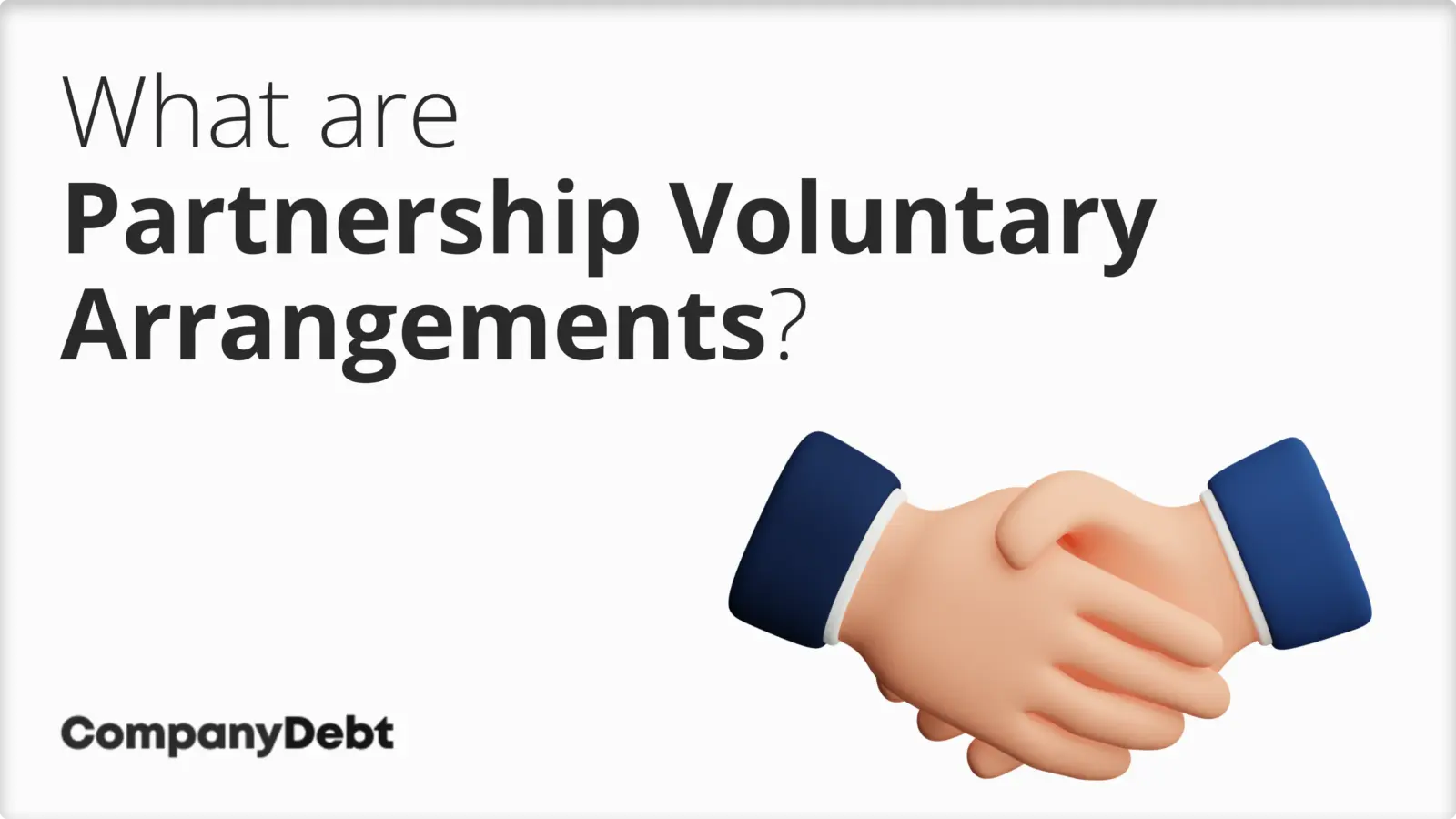
Partnership Voluntary Arrangements
What is a Partnership Voluntary Arrangement (PVA)?
A PVA is a formal agreement between a partnership and its creditors. It allows you to restructure your debts and continue trading, even if your business is currently insolvent.
Here’s why a PVA might be right for you:
- It halts creditor pressure, giving you time to focus on turning your business around
- You can continue trading while repaying debts at a more manageable rate
- It often results in a portion of your debts being written off
- It helps you avoid more drastic measures like bankruptcy or liquidation
While PVAs can be used for both traditional partnerships and LLPs, they offer particularly valuable protection for traditional partnerships by shielding individual partners’ assets from creditors once the PVA is approved, a benefit that’s less critical for LLPs which already provide limited liability.
In the following sections, I’ll delve deeper into how a PVA works, its benefits, and whether it’s the right choice for your situation.

How a PVA Works
Here’s how a PVA typically unfolds[1]Trusted Source – Insolvency Service – Partnership Voluntary Arrangements:
- You’ll work with an insolvency practitioner to draft a proposal. This outlines how much you can afford to repay and over what period, usually spanning three to five years.
- The proposal is then presented to your creditors. They’ll review the terms and decide whether to accept them.
- A creditors’ meeting is held, at which a vote is held. For the PVA to be approved, at least 75% (by value) of the voting creditors must agree to the terms.
- If approved, the PVA becomes binding on all creditors, even those who voted against it or didn’t vote at all.
- You’ll make regular payments to the insolvency practitioner, who distributes the funds to your creditors as per the agreed terms.
It’s important to note that while a PVA is in place, your partnership retains control of the business. However, you must adhere to the terms of the arrangement. Failure to do so could result in the PVA being terminated, potentially leading to more severe consequences.
Benefits of a PVA
For your partnership:
- Breathing space: A PVA halts creditor pressure, giving you valuable time to focus on turning your business around.
- Continued trading: Unlike liquidation, a PVA allows you to keep operating your business, preserving jobs and maintaining client relationships.
- Debt reduction: A portion of your debts will be written off at the end of the PVA term.
- Flexible repayments: The arrangement can be structured to match your cash flow, making repayments more manageable.
- Protection from legal action: Creditors can’t take further legal action against your partnership while the PVA is in place.
For your creditors:
- Higher returns: Creditors often receive more money through a PVA than they would if your partnership were to be liquidated.
- Certainty: Regular payments provide creditors with a predictable income stream.
- Continued business relationship: By supporting your recovery, creditors may retain a valuable customer for the future.
- Avoid liquidation costs: PVAs are generally less expensive to administer than liquidation, potentially leaving more funds for repayments.
It’s worth noting that while a PVA can offer these benefits, it’s not without its challenges. You’ll need to stick to the agreed terms, which may require tight financial management and potentially difficult decisions about your business operations.
Potential Drawbacks and Limitations of PVAs
While Partnership Voluntary Arrangements (PVAs) can be beneficial, they come with several important considerations:
- Viability Requirement: Only suitable for partnerships with demonstrable long-term viability. May not address fundamental business model flaws.
- Creditor Approval: Requires 75% creditor approval, which can be challenging to secure.
- Reputational Impact: May affect relationships with suppliers, clients, and financial institutions.
- Compliance Demands: Strict adherence to PVA terms is required.
- Limited Flexibility: This typically lasts 3-5 years and involves restricted financial flexibility, which may impede one’s ability to respond to market opportunities or challenges.
- Personal Liability: Partners may need to enter into Individual Voluntary Arrangements (IVAs) alongside the PVA, affecting personal assets and credit ratings.
- Ongoing Scrutiny: Subject to continuous oversight from the appointed Insolvency Practitioner, potentially impacting day-to-day operations.
- Cost Implications: Fees for Insolvency Practitioners and legal advice can be significant and must be factored into financial planning.
- Future Borrowing: Even after successfully completing a PVA, securing future credit or investment may be challenging due to insolvency history.
When to Consider a PVA
While every situation is unique, several key indicators suggest that a PVA might be the appropriate course of action for your partnership.
Consider a PVA if:
- You’re facing mounting debts that you’re struggling to repay
- Creditors are threatening legal action
- Your partnership is technically insolvent but has the potential for recovery
- You need time to restructure your business or improve your cash flow
- You’re relying heavily on credit to meet day-to-day expenses
How Much Does a Partnership Voluntary Arrangement Cost?
Only a Licensed Insolvency Practitioner can act on behalf of a partnership when entering into a PVA. Up to the point of the creditors’ meeting, they are known as the ‘Nominee’. Once the PVA has been agreed, the IP becomes the ‘Supervisor’.
The fees for the Nominee and the Supervisor are separate. The Nominee’s fee is agreed with the partners when the IP is instructed to proceed. This depends on the complexity of the case and can cost as little as £2000.
The Supervisor’s fees are usually fixed by the creditors and are paid annually. These would usually be around £3000 to £4000 each year.
PVA vs. Other Insolvency Options
When a partnership faces financial difficulties, several insolvency options exist.
- Voluntary Liquidation: This involves winding down the business voluntarily. It offers more control than compulsory liquidation but often results in business closure.
- Compulsory Liquidation: Forced by creditors, this involves selling assets to repay debts. It’s generally the least desirable option with potentially severe consequences for partners.
- Informal Creditor Arrangements: These are less formal than PVAs and may be suitable for partnerships with less severe financial problems. Informal arrangements lack the legally binding power of a PVA and rely on voluntary cooperation from all creditors.
A PVA often allows a partnership to continue trading while managing debts. However, the best option depends on specific circumstances. Seeking advice from a licensed insolvency practitioner is essential.
How can we help?
Are you navigating the complexities of partnership debt? Our experienced insolvency practitioners are here to guide you through your options, including Partnership Voluntary Arrangements.
- Free, confidential consultation
- Tailored advice from licensed professionals
- Quick response to urgent situations
- Comprehensive support throughout the process
Call our expert team now on 0800 074 6757 for no-obligation advice tailored to your partnership’s unique circumstances.
The primary sources for this article are listed below, including the relevant laws and Acts which provide their legal basis.
You can learn more about our standards for producing accurate, unbiased content in our editorial policy here.
- Trusted Source – Insolvency Service – Partnership Voluntary Arrangements







